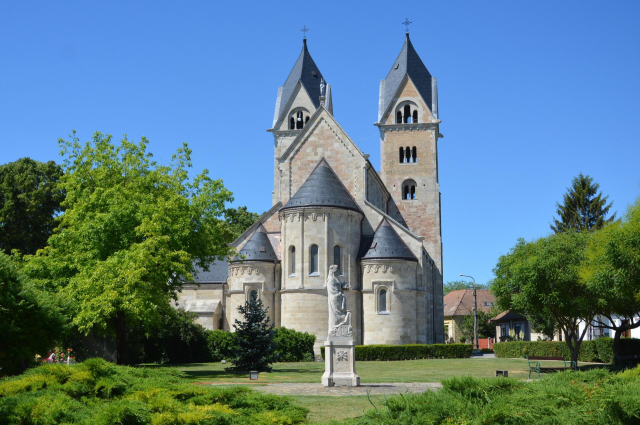
Stop point - Kóny

The village is located at the junction of the Rábaköz and the Hanság. South of the village, a special "lake area" has developed as a result of peat extraction. The footpath passes near these lakes. A large part of the village border is a nature reserve. The church of St. Michael was built in 1723.
The Fertő-Hanság National Park lies in the north-western part of Hungary. Its predecessor was the Fertő-tó National Park, which was created in 1991 by the reorganisation of the Fertő-tó Landscape Protection Area, and received its current name in 1994 when the Hanság Landscape Protection Area was added to it. On 24 April 1994, a joint opening ceremony was held with the neighbouring Austrian National Park.
The international recognition of the Fertő valley is demonstrated by the fact that it was declared a Biosphere Reserve in 1979 and since 1989 it has been listed as a Wild Water of International Importance under the Ramsar Convention.
The Fertő-Hanság National Park covers an area of 23 731 hectares in Hungary and 10 500 hectares in Austria, while the Neusiedler See - Seewinkel National Park is located in Sarród, in Kócsagvár, and the Austrian park in Illmic.
The area's conservation values are under serious threat because of plans to build a project in the coming years that will cause major damage to the environment.
The Hanság was formed by the wind shaping the surface after the deposition of sand and gravel deposits from rivers. The area is divided by the main channel of the Hanság, built at the beginning of the last century.
The forests of the Kapuvári-Hany are richer in insects and reptiles, such as the basking lizard. The Lébényi-Hany is characterised by dry marshland, where baskets of baskets open. The protected bustard nests in the area, and the endangered Parlagi viper can sometimes be seen here. The woodland forests are inhabited by the kestrel, the tawny owl and the barn owl.
The remaining lakes are home to a rich aquatic life. They are also home to the marsh warbler and the compo. The reedbeds are home to the bufflehead. The rare rat-headed sowbug lives in the area around White Lake in Mosonbánfalva.
In 2001, the reflooding of the Nyirkai-Hany started the rehabilitation of part of the Hanság.
Source: Kóny website

